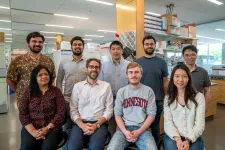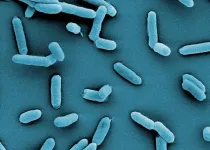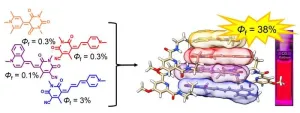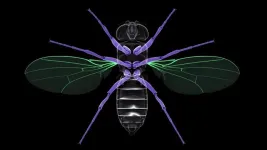(Press-News.org) ST. LOUIS, MO, June 26, 2024 – With the goal of reducing the time and cost it takes to bring an improved crop to the marketplace, research conducted in the laboratory of Keith Slotkin, PhD, and his colleagues in the Plant Transformation Facility at the Donald Danforth Plant Science Center, was recently published in the scientific journal Nature. The publication Transposase-assisted target site integration for efficient plant genome engineering focuses on technology called TATSI (Transposase-Assisted Target Site Integration), which uses transposable elements to integrate custom DNA into specific sites in plant genomes.
The TATSI technology takes advantage of over two billion years of evolution of plant transposable elements, which naturally function as honed molecular machines to insert DNA into the genome. The high-frequency and high-precision target site integration of custom DNA into plant genomes enables the faster and less expensive production of gene-edited plants to address global challenges in agriculture, climate and the environment.
A critical bottleneck in modern crop improvement is the low frequency and error-prone integration of foreign DNA into the plant genome, hampering genome editing approaches for crop improvement. The CRISPR/Cas system functions like a pair of molecular ‘scissors’ to cut the genome and introduce site-specific changes to the DNA. But current methods lack robust ways to add custom DNA accurately and efficiently at those edited sites. TATSI technology takes advantage of the molecular “glue” feature of transposable elements to provide custom ‘cut-and-paste’ genome editing when combined with CRISPR/Cas. The “scissors + glue” combination enables an order-of-magnitude increase in the rate of targeted DNA integration in plant genomes, allowing for custom improvement of plants through the addition of important traits such as virus resistance, elevated nutrient levels, or better oil composition.
The research on TATSI started in 2019 following the Danforth Center’s “Conversations: Big Ideas 2.0” event, a competition in which a team from the Slotkin proposed harnessing the power of transposable elements for crop improvement. Often referred to as the “junk DNA,” transposable elements comprise over 70% of corn genome. Using the enzyme called “transposase” encoded by certain transposable elements, the big idea was a new genome editing tool that could enable development of a wide variety of new traits fast, better and cheaper. The Slotkin team won the competition and received seed money to initiate their research.
Since then, the Slotkin lab has garnered research funding from Bayer Crop Science and the U.S. National Science Foundation (NSF). Further investment from the Danforth Center’s Proof of Concept awards and NSF resulted in prototypes and pre-commercial development. “Born out of the Big Ideas 2.0 competition, this project changed the course of our research we’re doing today and into the future,” said Slotkin. “It is a real testament to the broader ‘focus-on-impact’ attitude of the Danforth Center.”
Nature is one of the oldest and most prestigious scientific journals that attempts to publish the highest impactful scientific research.
About The Donald Danforth Plant Science Center
Founded in 1998, the Donald Danforth Plant Science Center is a not-for-profit research institute with a mission to improve the human condition through plant science. Research, education, and outreach aim to have an impact at the nexus of food security and the environment and position the St. Louis region as a world center for plant science. The Center’s work is funded through competitive grants from many sources, including the National Science Foundation, National Institutes of Health, U.S. Department of Energy, U.S. Agency for International Development, and the Bill & Melinda Gates Foundation, and through the generosity of individual, corporate, and foundation donors. Follow us on Twitter at @DanforthCenter.
Media contact: Karla Roeber, VP Public and Government Affairs, kroeber@danforthcenter.org
END
New tool enables faster, more cost-effective genome editing of traits to improve agriculture sustainability
2024-06-26
ELSE PRESS RELEASES FROM THIS DATE:
Unlocking the world of bacteria
2024-06-26
Bacteria populate virtually every habitat on Earth, including within and on our own bodies. Understanding and engineering bacteria can lead to new methods for diagnosing, treating, and preventing infections. Additionally, it presents opportunities to protect crops from disease and create sustainable cell factories for chemical production, reducing environmental impact — just a few of the many benefits to society. To unlock these advantages, scientists need the ability to manipulate the genetic content of these bacteria. However, a longstanding bottleneck in genetically engineering bacteria has been the efficient ...
Argonne to support new AI for science projects as part of the National AI Research Resource Pilot
2024-06-26
The U.S. Department of Energy’s (DOE) Argonne National Laboratory will support three innovative artificial intelligence (AI)-driven science projects as part of the first round of awards from the National Artificial Intelligence Research Resource (NAIRR) Pilot.
Led by the National Science Foundation (NSF) in collaboration with DOE and several partners, the NAIRR Pilot aims to provide researchers and students with expanded access to key AI resources and data. NAIRR’s ultimate goal ...
Stress testing pension funds: Lithuanian researchers lead global innovation
2024-06-26
“We wanted to investigate how second pillar pension funds react to financial crises and how to protect them from the crises,” says Kaunas University of Technology (KTU) professor Dr Audrius Kabašinskas, who, together with his team, discovered a way to achieve this goal. The discovery in question is the development of stress tests for pension funds. Lithuanian researchers were the first in the world to come up with such an adaptation of the stress tests.
Stress tests are usually carried out on banks or other financial institutions to allow market regulators to determine and assess their ability to withstand adverse economic conditions.
According to the professor at ...
Multivitamin use and mortality risk in 3 prospective US cohorts
2024-06-26
About The Study: Multivitamin use was not associated with a mortality benefit in this cohort study of U.S. adults. Still, many adults report using multivitamins to maintain or improve health.
Corresponding Author: To contact the corresponding author, Erikka Loftfield, Ph.D., M.P.H., email erikka.loftfield@nih.gov.
To access the embargoed study: Visit our For The Media website at this link https://media.jamanetwork.com/
(doi:10.1001/jamanetworkopen.2024.18729)
Editor’s Note: Please see the article for additional information, including other authors, author contributions and affiliations, conflict of interest and financial disclosures, ...
Solar technology: Innovative light-harvesting system works very efficiently
2024-06-26
In order to convert sunlight into electricity or other forms of energy as efficiently as possible, the very first step is an efficient light-harvesting system. Ideally, this should be panchromatic, i.e. absorb the entire spectrum of visible light.
The light-collecting antennae of plants and bacteria are a model for this. They capture a broad spectrum of light for photosynthesis, but are very complex in structure and require many different dyes to transmit the energy of the absorbed light and focus it on a central point.
The light-harvesting systems developed by humans to date also have disadvantages:
Although ...
Brain’s ‘escape switch’ controlled by threat sensitivity dial
2024-06-26
Neuroscientists have discovered how the brain bidirectionally controls sensitivity to threats to initiate and complete escape behaviour in mice. These findings could help unlock new directions for discovering therapies for anxiety and post-traumatic stress disorder (PTSD).
The study, published today in Current Biology, outlines how researchers at the Sainsbury Wellcome Centre at UCL studied a region of the brain called the periaqueductal gray (PAG), which is known to be hyperactive in people with anxiety and PTSD. Their ...
Improving prostate cancer screening for transgender women
2024-06-26
Transgender women are still at risk for prostate cancer. A new study led by Cedars-Sinai Cancer investigators, published in the peer-reviewed Journal of the American Medical Association, concludes that current screening guidelines could miss early-stage prostate cancer in transgender women on hormone therapy.
The prostate, a small gland that helps make semen, also produces a protein called prostate-specific antigen, or PSA. Blood levels of PSA tend to be elevated in people who have prostate cancer, and the PSA test, which measures those levels, is a common prostate ...
For healthy adults, taking multivitamins daily is not associated with a lower risk of death
2024-06-26
What: A large analysis of data from nearly 400,000 healthy U.S. adults followed for more than 20 years has found no association between regular multivitamin use and lower risk of death. The study, led by researchers at the National Institutes of Health’s National Cancer Institute, was published June 26, 2024, in JAMA Network Open.
Many adults in the United States take multivitamins with the hope of improving their health. However, the benefits and harms of regular multivitamin use remain unclear. ...
From takeoff to flight, the wiring of a fly's nervous system is mapped
2024-06-26
Work is underway on a wiring diagram of the motor circuits in the central nervous system that control muscles in fruit flies. This connectome, as the wiring diagram is called, is already providing detailed information on how the nerve coordination of leg movements differs from that controlling the wings.
Although fruit flies seem like simple creatures, the researchers said that their motor system contains “an unexpected level of complexity.”
“A typical fly motor neuron receives thousands of synapses from hundreds ...
A chip-scale Titanium-sapphire laser
2024-06-26
As lasers go, those made of Titanium-sapphire (Ti:sapphire) are considered to have “unmatched” performance. They are indispensable in many fields, including cutting-edge quantum optics, spectroscopy, and neuroscience. But that performance comes at a steep price. Ti:sapphire lasers are big, on the order of cubic feet in volume. They are expensive, costing hundreds of thousands of dollars each. And they require other high-powered lasers, themselves costing $30,000 each, to supply them with enough energy to function.
As a result, Ti:sapphire lasers ...







